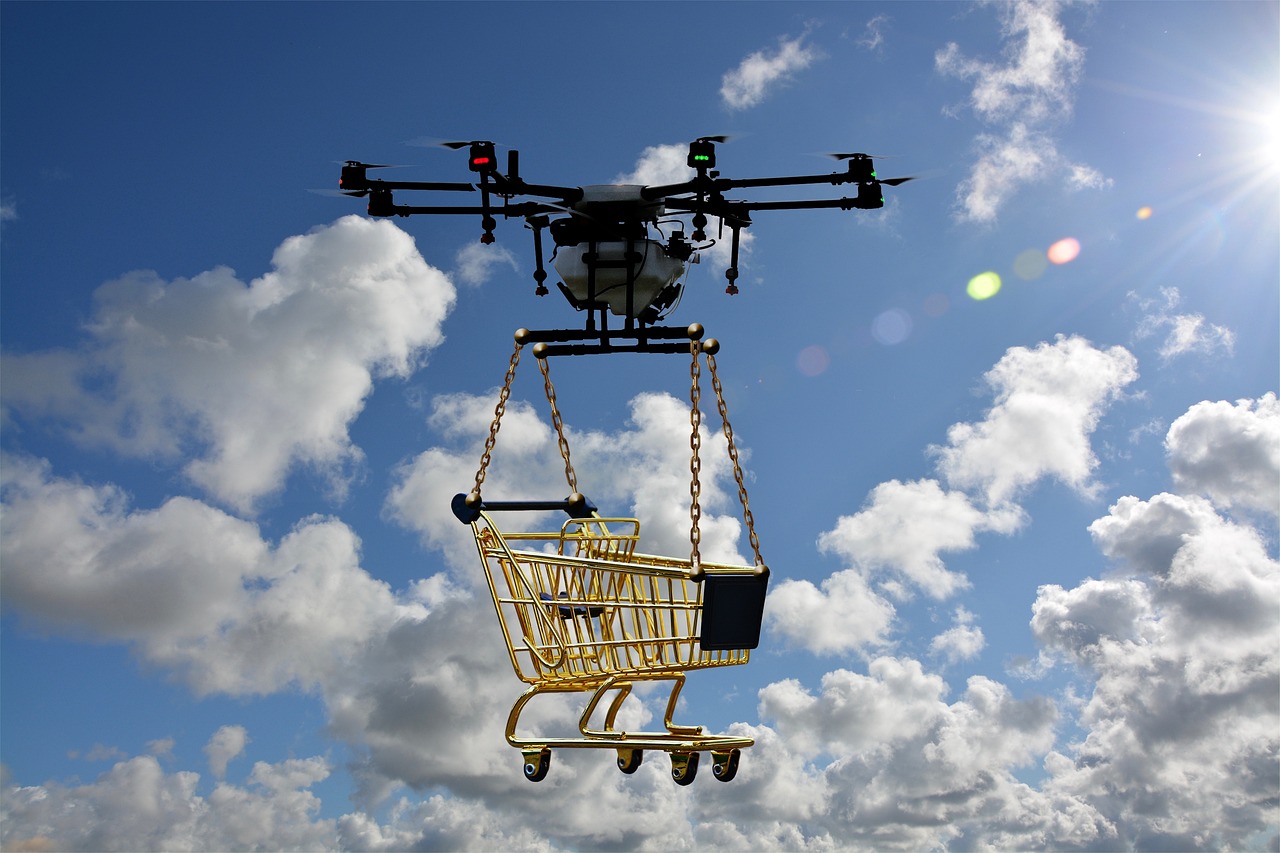In 2013, then-CEO of Amazon Jeff Bezos went on 60 Minutes to say that he thought drone delivery would be achievable in four to five years. That interview spurred visions of everything from pizzas to packages being delivered by drone, capturing the imagination of the general public.
However, stakeholders across the drone industry were much more skeptical about how delivery applications would work under current FAAs regulations and in terms of the bottom line. Many have lamented the hype that drone the commercial drone industry in the early 2010s, but it’s telling that few of the predictions and reports that focused on the potential the value of the technology focused on drone delivery applications. Working out regulatory permissions to fly a drone over a controlled construction environment was a challenge, so what would it mean to do so in an urban environment? Or at scale? Additionally, many questioned the economic aspects of how drones would positively impact last-mile delivery, which more recent reports continue to explore.
That’s not to say there weren’t companies somewhat or solely focused on drone delivery applications, as Zipline first launched blood deliveries in 2016, while Project Wing started as a secret drone program at Google over a decade ago. The value associated with drone delivery when it can literally be the difference between life and death will always be distinct though, while the ambitions of organizations like Google and Amazon with the technology go far beyond the economic considerations that most people in the drone industry have to prioritize. All of that meant delivery applications were at the periphery of the industry, rather than at the forefront.
That changed in 2020. Many realized that the quick and contact-less delivery manner that drones could support was ideal for different levels of quarantine, much less the fact that they were literal social-distancing machines. While companies like Walmart were exploring and experimenting with the technology before the pandemic, there was a noticeable shift in how such projects were being prioritized in 2020, with these major brands and plenty others looking at the drone delivery applications in a whole new way. The era of ice cream delivered by drone had finally arrived!
Unfortunately, the same regulatory and economic challenges that were associated with the technology in those early days were still apparent. What was new was the spotlight associated with seeing them resolved, as well as the number of companies focused on doing so that pushed drone delivery into overdrive. That spotlight and focus is something that looks to be taking shape in a big way in 2023.
While we’re now well past the deadline Bezos established for Amazon, the company has not shifted away from their established goals with drone delivery. Despite well-publicized setbacks, the company clearly sees 2023 as a big year for their program. Similarly, Wing recently announced that they expect to handle “millions of deliveries” at a lower cost per delivery than traditional means by mid-2024. DroneUp is also making headlines with Walmart, as customers in certain areas can experience same-day delivery via drone while the company performed over 6,000 deliveries in 2022.
But if you look a bit past those headlines, you can see why 2023 is set to be such a pivotal year for those organizations but also for the entire sector. Underlying all of those developments and what countless others are working on is a question about the demand. Go back to that 2013 interview with Bezos, and you can literally see the “oh wow!” sensation that he pushed and the public subsequently embraced. That perception further evolved in a very practical way in 2020 when drones became the best and most practical way for certain goods to be delivered. But in our (somewhat) post-pandemic world, is either enough to further compel consumer demand for drone delivery?
Results so far have been mixed. In one of Amazon’s testing locations, only two customers had been onboarded to participate in the pilot. While many have said they’d be willing to pay more for drone delivery if it means getting items in an hour, would they really be willing to pay three to four times the amount? Or even double?
The costs of such deliveries will eventually be passed on, but as ever, the devil is in the details. The ability to change these numbers are in the technology itself, as a McKinsey & Co. report points out, a single package delivery via drone could eventually be dramatically reduced based on changes in regulation and technology. Nonetheless, the reality of that demand is what will define the present and future of the application.
All of that is why 2023 is set to be such a pivotal year, which recent headlines from Zipline further demonstrate. Their new Platform 2 (P2) home delivery drone can hover as it lowers packages on a tether, with 2023 testing that should allow it to go into service by early 2024.
Regardless of the feasibility of any of these publicly pronounced deadlines, they showcase how many of these companies are looking for a major “win” in 2023 that will help quell speculation about how the technology can work legally, at scale, and also address the core issue of customer demand. Questions remain with each, but we can go back to that interview with Bezos to get a definitive answer to them.
“It will work and it will happen.”
He was right then and he’s right today. But we’ll have a much better sense of when that reality will be reflected in the market by the end of this year.















Comments